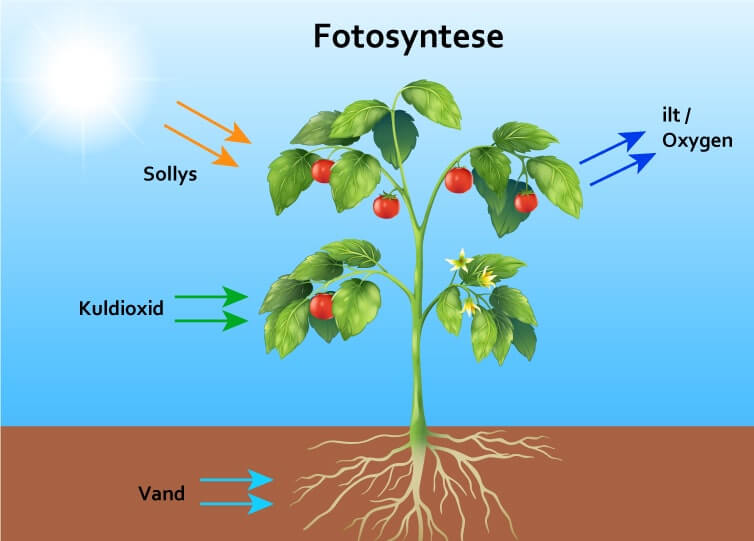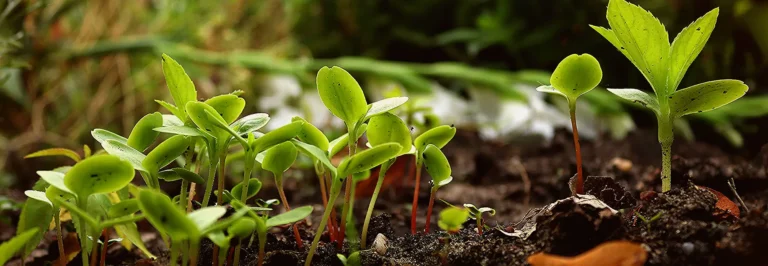How many μmol does my plant need to thrive? How to measure the amount of light? What does my plant need? What does PPFD mean? There are many big questions when it comes to advanced plant cultivation, both when it comes to hydroponics, but also when we just look at artificial lighting in isolation.
Most people know that plants live on light, but many plants need light in various waysnet quantities. Some plants are able to grow in the shade, while other plants thrive best when get more light. And then, of course, there are also the plants that thrive best in strong sunlight all day. In this article, we will try to explain to you how to find your way around the needs of your various plants, and of course also all the terms you need to understand.
It can be difficult to find head and tail in all the information about how much light your plant should have. At plantelys, we have made an effort to find the most important information for you in an easily accessible format.
What does meanis PPFD (µmol/m2/s)?
Plants and mePeople have two very different ways of perceiving light, and its intensity. Plants use light to create photosynthesis. When plants use light to grow, it is typically measured in either the unit we call PPFD or PPF.
PPFD is defined as the amount of PAR light that reaches a given point. PPFD is measured in µmol/m2/s. That is, the amount of light per square meter per second. PPFD can in many ways be compared to what we know as LUX. You typically measure PPFD using a PARmeter when you have to find the distance from different light sources. Read more about what PAR means

What is that dishte amount of μmol for my plant?
Plants are differentige light requirements depending on the species they are, as well as the origin of the plant and where the plant is located in relation to its life cycle. It can therefore be very difficult to assess which growth lamp is ideal for exactly your specific plants. The most effective way to find the perfect lamp is to compare your plantes light requirements, which you can find on this page, with the grow light manufacturer's data. Namely by looking at the brightness PPFD μmol/m2/s and the amount of light DLI (mol·m-2·d-1).
To get the most of it optimal growth for your plants, it is therefore extremely important to be aware of what light your plants need in terms of PFFD. The values for the light quantities are typically specified in intervals as the majority of plants grow well, even when the light is not optimal. However, it is important not to get too far below, as this will reduce growth. Too much light is less bad, but it exists in return waste of power, as the plant would grow just as efficiently with less light.

How many μmol does my plant need to thrive? See the tables below for an overview of the most common plants.
PPFD light levels for – shade plants – 20-80 μmol/s*m² |
| Plant | Min (μmol/s*m²) | Max (μmol/s.m²) | Typical (μmol/s*m²) | DLI (Mol/d*m²) |
| Ferns | 35 | 55 | 45 | 2-4 |
| Clones, cuttings and propagation | 70 | 80 | 75 | 2-6 |
| Begonia pavonina | 20 | 40 | 30 | 2-4 |
| African VioletsTropical Begonias Chrysanthemum (Chrysanthemum) Stork beak (Geranium) etc. Rose geranium (Pelargonium graveolens) etc. |
40 | 80 | 60 | 5-7 |
| Orchids – Paphs with plaited leaves, Jewel orchids, Phals | 40 | 80 | 60 | 7-11 |
| Flame Sword (Bromelia) | 40 | 120 | 90 | - |
PPFD light levels for – half shade plants – 80-350 μmol/s*m² |
| Plant | Min (μmol/s.m²) | Max (μmol/s.m²) | Typical (μmol/s.m²) | DLI (Mol/d*m²) |
| Seedlings and young plants | 120 | 180 | 150 | +12 |
| Coral vine (Kalanchoë) Rose in pot | 60 | 130 | 90 | 6-15 |
| Golden vine (Pothos) Flamingo flower (Anthurium) Large-leaved Aroids |
80 | 150 | 110 | 6-15 |
| Wasabi | 200 | 500 | 350 | 6-15 |
| Tropical succulents such as Christmas cactus, Philodendrons, Orchids – Cattleya |
150 | 350 | 200 | 20-30 |
| Monstera | 100 | 500 | 250 | 4-12 |
| Orchids – Onc, Phrags, Epidens, Dends etc. | 80 | 150 | 110 | 6-15 |
| Orchids – Phalaenopsis | 80 | 180 | 110 | 4-7 |
| Orchids – Dendrobium | 130 | 350 | 195 | 10-20 |
| Small herbs and leafy greens, basil, microgreens, etc. | 150 | 300 | 230 | 10-12 |
| Salad | 150 | 300 | 300 | 14-16 |
| Broccoli | 250 | 350 | 300 | 15-35 |
| - | - | - | - | - |
| Watermelons | 250 | 350 | 300 | 14-16 |
| Tomato – Seedlings and cuttings | 100 | 150 | 200 | 5-7 |
| Tomato – Growth phase | 170 | 350 | 230 | 14-18 |
| Tomato – Flowers and fruit set | 500 | 700 | 600 | 20-50 |
| Eggplant | 170 | 350 | 230 | 20-30 |
| Peppers / Chili (Capsicum) | 280 | 600 | 350 | 30-40 |
| Cucumbers – Growth phase | 300 | 600 | 400 | 20-30 |
| Cucumbers – Flowers and fruit set | 650 | 1,000 | 850 | 20-30 |
PPFD light levels for – full sun light-demanding plants – 280-1000 μmol/s*m² |
| Plant | Min (μmol/s.m²) | Max (μmol/s.m²) | Typical (μmol/s.m²) | DLI (Mol/d.m²) |
| - | - | - | - | - |
| Fruit trees and shrubs | 600 | 1000 | 800 | +12 |
| Tropical trees like citrus etc. | 350 | 600 | 450 | - |
| Orchids – Vanda | 350 | 600 | 450 | 6-15 |
| - | - | - | - | - |
| Eucalyptus | 600 | 1000 | 800 | - |
| Desert cactus | 600 | 1000 | 800 | 20-30 |
| Cannabis in the Growth Phase | 280 | 550 | 350 | 20-35 |
| Cannabis – Flowering phase | 650 | 1,000 | 850 | 35-65 |
PPFD light levels for – cut flowers |
| Plant | Min (μmol/s.m²) | Max (μmol/s.m²) | Typical (μmol/s.m²) | DLI (Mol/d.m²) |
| Chrysanthemum (Chrysanthemum) | 105 | 220 | 140 | +15 |
| Roses | 170 | 350 | 220 | +15 |
| Lilies | 80 | 130 | 90 | +15 |
| Lisianthus | 170 | 350 | 230 | +15 |
| Alstroemeria | 60 | 160 | 120 | +15 |
| Orchid | 80 | 160 | 120 | +15 |
| Freesia | 70 | 140 | 90 | +15 |
| Gerbera | 80 | 120 | 90 | +15 |
| Tulip | 25 | 90 | 60 | +15 |
NOTE: Please note that all the numbers are indicative, and may therefore vary depending on the variety and variant.
Calculation of DLI or light hours

When you want to give your plants the right amount of light, it is important to make a DLI calculation. A DLI calculation allows you to find the correct amount of light for your plant.
DLI = PPFD x (3600 x Hours) / 1,000,000
3600 = seconds in an hour.
Hours = Number of hours the plant receives light.
1 Mole = 1,000,000 μmol
How many hours of light should my plants have:
Not all plants are the same, they therefore all need different amounts of light, below you can see how many hours of light the most frequent plants each need, in order to achieve optimal growth.
Chili: 14-20 hours/day (DLI: 20-30)
Strawberries: 14-16 hours/day
Microgreen: 14-16 hours/day (DLI: 6-18)
Oregano: 12 hours/day
Spinach: 12 hours/day (DLI: 12-16)
Tomatoes inflorescence: 16-20 hours/day (DLI: 20-50)
Peas: Growth: 12 hours/day / Fruiting: 14-18 hours/day (10-20)
Plants, like us humans, are not the same, so they all need different amounts of light, heat and water. Light plays a big role, so you have to be aware of which plant you have and how much light the plant needs. It is also important to assess the right amount of light yourself, depending on whether you have just started growing your plants or whether the plant is an adult and you therefore want to maintain it. Try our calculator at the bottom of the page.
If your plant needs more light, a grow lamp can be the solution. At plantelys.dk we have a wide selection of different grow lights. Read more about grow lights.
If you need help or want to know more about plant lights and plants, you are more than welcome to contact our team of LED grow light experts here
PPFD (umol/s/m2) to DLI (mol/day) calculator:
PPFD (umol/s/m2):Hours:





